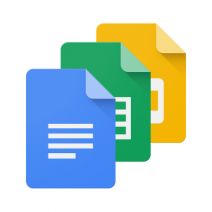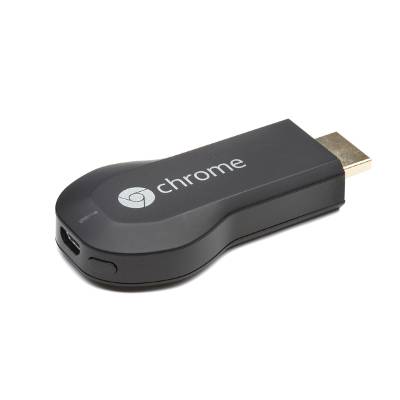Directive Blogs
Does your business use Google Workspace for its productivity solution? If so, we’ve got a tip for you—several, in fact, as we explore the various shortcuts available to expedite your productivity. Let’s take a look at some of the lesser-known shortcuts and how your business can use them to power up its efficiency.
Google Lens lets you do some cool things with your mobile device, even if it sometimes feels a bit niche. Google Chrome also has functionality that allows you to use Google Lens to search for anything visible in the browser. For example, it can detect images and text, or still images captured from video, to return results.
Today, we want to highlight how you can use this neat functionality!
If you are a Gmail user, you might have noticed the different inbox categories available. This makes it much easier to reach “inbox zero.” With the “priority inbox,” you can achieve this feat without so much as breaking a sweat—unless you count sweat from how much you’re laughing at how easy this tip is to pull off.
If you feel like you have too many browser tabs open at any given time, then you'll be happy to know that you can sometimes save certain browser tabs as a standalone application on your device. This will give them their own icon and make accessing them much easier than constantly navigating to them through your web browser.
Google Search is a cornerstone of the internet, used by billions of people daily to find information quickly and efficiently. But have you ever wondered what happens behind the scenes when you type a query into Google and hit "search"? Let's dive into the intricate process that powers the world's most popular search engine.
There are several reasons to use a form to collect data for your business, from customer impressions and service needs to employee feedback about internal matters as a means of collaborative decision-making. The trouble comes when it is time to compile all the responses… unless you know how to use the tools at your disposal.
For this week’s tip, we’re walking through the process of creating a form that self-populates a spreadsheet using Google’s toolkit.
One of the nice things about software platforms is how well the applications within them interact with one another. Take, for instance, the applications contained within Google Workspace.
Because of the interconnected nature of the Google Workspace platform, there’s a lot that the different programs can do in tandem. As an example, let’s consider how the word-processing application Google Docs can be used to generate events in the associated account’s Google Calendar.
Templates are a handy feature that popular word processing platforms, like Google Docs, offer to help users create specific types of documents. While there are plenty of prebuilt templates available, there’s always the possibility that you have a need that isn’t filled by one of them.
In these cases, you always have the option to build your own. Let’s go over how, and discuss some of the elements and options that your custom Google Docs templates can support.
The Internet is pretty great. You can watch videos of cats being weird, and then watch the London Philharmonic Orchestra perform Stravinsky’s Rite of Spring. Then you can go on Reddit and learn how to replace the drywall in your bathroom. Just another typical Sunday afternoon with the Internet, right?
Unfortunately, the Internet isn’t always perfect. It can be pretty dangerous, and we’d like to share some surprising terms that can lead to dangerous websites and malware if you search for them on Google.
Whatever your industry, there are going to be processes that need to be followed, and this will require no small amount of organization to keep all the moving parts in tandem with each other. Fortunately, tools that can help with your project management needs are readily available, so long as you take advantage of their capabilities.
Take Google Sheets, for instance.
While artificial intelligence is frequently hyped up to the point that it seems to be plucked from the realm of science fiction, its true applications are actually much more mundane. That being said, these applications are often the ones that show the most promise in terms of the value they have to offer society.
For instance, let’s consider the work that Google is doing through something called Project Green Light.
Laptops are no longer exclusive to the home and work environments; indeed, more and more schools and universities are adopting laptops and other educational technology for the purposes of delivering cutting-edge instruction. Chromebooks are just one option available, if not the most cost-effective one out there. This leads to a unique set of problems, though, particularly when the software powering these devices reaches its end of life.
Both Microsoft and Google offer work profile solutions that are designed to separate personal and professional use on mobile devices. These profiles are commonly used in enterprise settings to enhance security and manageability while allowing employees to use their personal devices for work-related tasks. Here's an overview of work profiles from Microsoft and Google.
Since its domain was first registered on September 15, 1997, Google has exploded from a relatively simple search engine to the massive assortment of platforms and services that fall under the Alphabet umbrella. That being said, most people tend to think of very specific aspects of Google’s Search function… like the amusing Easter Eggs that the platform has become somewhat famous for.
Do you have an old Google account that you created years ago, only to replace it later with one that is more on-brand and less filled with spam messages? You’re not alone, but as you might expect, these accounts can create more problems than they are worth if you let them sit around unused for too long. Perhaps that is why Google is planning to shut down any old Google accounts that have remained dormant for the past two years.
Email groups are remarkably useful. Instead of sending a copy of an email to each individual recipient, you can effectively create a simple forum post that everyone can participate in—a feature that certainly helps when collaboration is a priority. Let’s go over how you can quickly and easily create a group in Gmail.
Countless jokes have been made in the IT world about the perfect place to hide something being page two of Google—just hang out with some IT professionals, and there’s a good chance you’ll hear it. Unfortunately, Google is making a change to its search results that will make this joke completely irrelevant.
There is a scam going around that convinces organizations to pay for their Google Business Profile, and if you paid for this free service, you’ve fallen for the trick. Google is taking legal action against the scammers who have dragged their name through the mud, using Google’s notoriety to defraud businesses who just want to look competitive.
Let me ask you a question: how much did you pay Google for your Business Profile? Unfortunately, if the answer was anything other than “nothing,” you’ve been scammed. Google has actually announced that they are taking legal action against scammers who impersonated the company in order to defraud small businesses.
If your business uses Google Apps, then there is a good chance that you have some sort of integration set up with other services. If you grant permissions to other applications or programs to access and use Google Drive, you should know that you have some power over these permissions, and it’s incredibly important that you understand what permissions you are granting.
QR codes have cemented themselves as one of the most common technologies used to direct people to important resources or information about goods or services provided by an organization or company. You see them on menus in restaurants, instruction booklets, and even on business cards. How can you make QR codes for your business?
Modern spreadsheet programs, like Microsoft Excel or Google Sheets, carry a plethora of functions under the surface that—if used correctly—can take their utility to another level. For instance, the cells in your spreadsheets can be turned into dropdown menus. Let’s go over how to do so in both Excel and Sheets.
Last time, we started our discussion on the best search engines by talking about the behemoth, Google. While Google is, by far, the most popular and commonly used, and arguably the most accurate search engine, it doesn’t mean it’s always the right search engine to use. Let’s talk about some other alternatives and see where they might fit in.
If you’ve made it this far into our series, good for you, you’re on your way to finishing mastering your Google Business Profile. For the last segment of our series, let’s continue our discussion on Google Business profiles and how to really make your profile yours, and how to use it for engagement from your audience!
How often do you receive emails from someone written in another language? We bet the answer is “not often,” but you never know when being able to translate an email might come in handy—especially if you ever do business overseas. Let’s go over the built-in translation functionality that comes with Gmail.
When it comes to Google Business Profiles and Google’s algorithm your business’ visibility may depend on how good your business’ profile is. We further explain how to optimize your profile to not only comply with the practices demanded by the almighty Google Search algorithm but also provide searchers with the exact information they need.
How often does this scenario happen to you? You’re going about your workday and are being quite productive, when all of a sudden you close the wrong tab in your web browser, putting an end to your productivity. This isn’t crippling downtime or anything, but it’s an inconvenience that we know you can do without. Thankfully, modern web browsers let you reopen closed tabs or windows to get back to where you left off.
Google Workspace is a great tool that allows you to get a lot done, but sometimes you might find yourself in a position where you need to download the files and take them with you or send them to someone. In these cases, you might not want to share the link. Instead, you can simply download them as whatever file format you might need!
Bookmarks are an essential part of being productive with your Internet browser, but what happens when you switch to a different one, like Google Chrome? Do you have to manually add all of your bookmarks back to the browser? Nope! Let’s go over how you can import your bookmarks directly to Google Chrome and save some time.
Introduced in 2011, Chromebooks were little more than a web browser in the form of a laptop. However, a decade later, not only do Chromebooks dominate the classroom, as cloud computing continues its ascendence and remote work is embraced, Chromebooks have become the low-cost alternative to traditional laptops.
Google Chrome is a very popular browser nowadays. In June of this year, for example, about 65 percent of the overall browser market share was attributed to Chrome. Seeing as so many people utilize Chrome, we thought it would be helpful to share a few tips that can help make Chrome even more productive for the user.
While we cannot express how important it is to update your software and hardware in a timely manner, it is important to keep in mind that some of these updates aren’t going to be perfect. An upcoming update to Google Workspace serves as the perfect example, as the company has recently released an alert to inform users about an issue affecting Google Drive.
Google’s Android operating system has about a 71.9 percent global market share, making it the most used smartphone operating system in the world. It’s well-trusted, and although the experience differs since phone manufacturers customize Android to fit their device, generally the operating system is pretty stable. This wasn’t the case for a massive number of users around March 22nd, 2021.
Just in case you haven’t been paying attention, online privacy has been highlighted significantly in recent years—in no small part due to the sale of our profiles by the tech giants that provide today’s most (in)famous websites… including and especially Google. Having said this, it is also important to acknowledge that some of Google’s recent policy changes could suggest that this may change at some point.
Gmail has proven to be as secure as most other email platforms, but email is email and there are times when you send an email that isn’t opened promptly and you’d rather not have the information in that message get sent around or archived where you can’t control it. Now Gmail has added a feature that allows users to send messages that will delete themselves in a predetermined time frame, and work to keep the contents of those messages from being shared. Let’s take a look at them today.
While Google Search has become eponymous for “online search”, the company has not stopped innovating upon the capabilities of the service. Most recently (as of this writing, of course) one improvement that the company is making is to give more content a bit more context before a user clicks through to a potential threat.
Gmail is as secure as any comparable email platform, but there may be some messages you send that you’d rather not have hanging around in someone’s inbox. However, did you know that Gmail enables you to send messages that delete themselves after a set timeframe… while also preventing the contents from being forwarded, downloaded, copied, or printed?
For the business seeking out a comprehensive cloud-based content management and collaboration solution, Google Drive is an option that warrants serious consideration. While we don’t want to recommend it over another one of your options, per se, we did want to provide a brief beginner’s guide to putting it to use. That way, any business that does elect to adopt Google Drive—and the associated solutions it comes with—has more information going in.
Going through your passwords and updating them every so often is a very wise habit to get into, particularly when they are used to protect a lot of data—as the password to your Google account often is. Considering this, let’s go over how to update your Google password and otherwise lock down your account.
If it is going to remain the most common Internet browser, Google Chrome always needs to have new features added to it to make it the preferable choice for most users. Recently, Chrome Actions was implemented, likely contributing greatly to that goal. Let’s look at what Chrome Actions are, and how they could prove useful.
We realize that it’s one thing for us to tell you how important it is to update your software. After all, we’re tech guys, so we worry about that kind of thing all the time. Hopefully, it’s quite another matter when Homeland Security does it, which is why we’re really hoping that you take heed of this warning and update Google Chrome.
The Android platform has various tools and applications available to assist users in keeping themselves organized and productive. One of these applications, Google Keep, offers particularly significant benefits. For this week’s tip, we’ll be going over some ways that you can use Google Keep to help “keep” track of the cornucopia of important information you need to process and retain.
Did you know that, as of July 2020, 69 percent of global desktop Internet users utilized Google Chrome as their browser of choice? With such a large market share, the security associated with Google Chrome is important to keep in mind. To help increase some of this awareness, we wanted to talk about Chrome’s many extensions and the permissions they are too often granted, with minimal awareness from the user.
Clearly demonstrating their prioritization of their G Suite offering, Google continues to innovate the platform’s many solutions to improve the user experience. Most recently, this has included giving Gmail a few extra functionalities to help further integrate a business’ communications. Let’s look at these functionalities together.
Data and cybersecurity is hard enough without vulnerabilities coming from one of your most utilized applications. That’s the scenario after a bug was found in some of today’s most popular Internet browsers putting billions of people’s data security at risk. Let’s take a brief look at the vulnerability and how you can ensure that it won’t be a problem for you or your company.
In a rare turn of events, Google and Apple have teamed up with local governments to help slow the ongoing spread of COVID-19. How would you like an app that could notify you if someone you had been in proximity to had tested positive for COVID-19? As useful as this collaboration could be to staunching the pandemic, many people are in uproar about it, and have begun to spread misinformation.
Everyone knows how to do a Google Search, right? Go to the site, type whatever it is you’re looking for into the search bar, and you’re off to the races. Fewer people are aware, however, of the ways that you can help Google narrow its search a bit. Let’s go over a few handy Google cheat codes that can make your search results more precise.
Google may know a lot, but believe it or not, it doesn’t know everything. For instance, you may be trying to write up a document in Google Docs that Google doesn’t recognize. Maybe it’s one of your services that you’ve created a name for, or even the name of your business. The problem is that Google likes changing words it deems “wrong”. For this week’s tip, we’ll go over how to stop it from changing words you meant to use.
Augmented reality has been one of the most cited emerging technologies for the past few years. It was the technology that was supposed to fuel Google Glass, the failed attempt at creating a pair of revolutionary smart glasses. Since then, there hasn’t been much press about AR in the mainstream media and not much is known about major tech companies’ attempts to improve AR technology.
Nearly everyone uses Google in some way or another. The search engine is, by far, the most common way people get answers and find content online. The margins aren’t even close, either. Currently, Google handles about 90% of search queries, while the second and third place goes to Yahoo and Bing, who share just below 5% of the search market share.
Google curates the search results on the fly based on a lot of variables including where you are located, what kind of device you are on, and your online surfing habits. This means Google is collecting a lot of information about how we use the web to give us a better experience. Let’s look at how you can control what Google knows about you to better protect your privacy.
Imagine a world where there wasn’t a singular dishonest being. Passwords would simply vanish from our everyday lives, as we would not be paranoid of a breach or other forms of cybercriminal activity. The harsh reality is this will never become reality. Even worse, the cybercriminals don’t just skim for lack of passwords. Instead, the dishonest criminal goes even further; they take advantage of common or recurring passwords. So how do you know if your password practices are leaving you vulnerable? Google is here to help.
There is no question that Google is an absolute giant in computing, having moved from web search functionality to a much wider variety of applications. These applications now make up the G Suite, and are used by many, many businesses to accomplish their goals. Here, we’ll go over some of these features and how they can benefit your operations.
The Chromecast, Google’s offer to the growing streaming market, is a pretty handy device - even in the business setting. I know, I know, it is a consumer device, but some of its capabilities directly translate to professional use. Here, we’ll walk you through the process of setting up your Chromecast, four useful-for-business features, and the process of resetting your Chromecast if it ever needs it.
 How fast are you at finding the information you need using Google Search? In today’s data-driven world, knowing how to effectively use Google is actually a marketable skill. Did you know that there are ways in Google Chrome to search for what you need that take less time than typing your query in the search bar?
How fast are you at finding the information you need using Google Search? In today’s data-driven world, knowing how to effectively use Google is actually a marketable skill. Did you know that there are ways in Google Chrome to search for what you need that take less time than typing your query in the search bar?
 Logging into an account only to find out that you’ve been hacked can be a real hassle. If you’re wondering why and how this could have happened, you’re in luck; some accounts, like Google, record when and how the account is accessed, and finding out how is as easy as checking out your security settings. Here’s how you can see who is accessing your account, and how.
Logging into an account only to find out that you’ve been hacked can be a real hassle. If you’re wondering why and how this could have happened, you’re in luck; some accounts, like Google, record when and how the account is accessed, and finding out how is as easy as checking out your security settings. Here’s how you can see who is accessing your account, and how.
 Google might be best known for its search engine and groups of desktop apps, but it’s also known for innovating and rattling the cages of how we live our lives. One of the ways it’s doing so is with Google Wallet, an app that’s designed to make sharing cash and money transfers online even easier. What a lot of people forget, however, is that Google Wallet, and its associated card, can still be the target of fraud.
Google might be best known for its search engine and groups of desktop apps, but it’s also known for innovating and rattling the cages of how we live our lives. One of the ways it’s doing so is with Google Wallet, an app that’s designed to make sharing cash and money transfers online even easier. What a lot of people forget, however, is that Google Wallet, and its associated card, can still be the target of fraud.
 Voice-related technology is hardly news for Google. Android smartphones have had voice capabilities for a long time now. Google Now, the function's official name, can be used for Internet searches, setting alarms, adding calendar entries, activating entertainment like movies and music, calling or texting friends, and countless other functions. Now, however, you can literally write entire documents by using your voice in Google Docs.
Voice-related technology is hardly news for Google. Android smartphones have had voice capabilities for a long time now. Google Now, the function's official name, can be used for Internet searches, setting alarms, adding calendar entries, activating entertainment like movies and music, calling or texting friends, and countless other functions. Now, however, you can literally write entire documents by using your voice in Google Docs.
 Does your business use Google Drive? Google Drive provides several applications that are great for getting work done in the office, similar to Microsoft Office (Want to know the differences? Be sure to contact us). With Drive, there are easy ways to leverage it to your advantage in the form of keyboard shortcuts and other tips and tricks. Here are some of our favorites.
Does your business use Google Drive? Google Drive provides several applications that are great for getting work done in the office, similar to Microsoft Office (Want to know the differences? Be sure to contact us). With Drive, there are easy ways to leverage it to your advantage in the form of keyboard shortcuts and other tips and tricks. Here are some of our favorites.
Does your organization leverage any of Google’s plethora of services or applications to achieve success? Google Assistant can also be a great asset for your organization as it can connect to your smart devices and speakers to create an extremely valuable tool. This week’s tip will discuss some of the best features of Google Assistant and how it can affect your professional environment.
Google is the most visited website in the world. That distinction doesn’t come easily as 4.2 billion people are active users of the Internet. Google claims to process around 3.5 billion search queries per day, or 1.2 trillion searches per year. As a result, it has become the world’s most successful advertising site, which can actually be a hindrance for users looking to get information about a subject.
Businesses generally have to make an important choice about which brand of productivity software they will implement for day-to-day operations. Two of the heavy hitters in today’s business environment are Google and Microsoft utilizing their respective productivity solutions. While the choice of which service to work with seems exclusive, Google is making strides to break down this barrier and allow certain file types to be edited in Google Drive.
Google Chrome is the most-used browser in the world by a wide margin, which is part of the reason that it is so incredible that many people don’t know a lot about its built-in features. While we certainly can’t go through all of them in a single blog, we can offer a few tips describing the best of them.
Late in the summer this past year there were several articles written about how Google would continue to track the location of a person’s smartphone after they had chosen to turn their location settings off. A Princeton researcher corroborated those claims for the Associated Press, traveling through New York and New Jersey with locations services off only to be tracked the entire way. Today, we will discuss this issue, and tell you what you need to know to keep Google from tracking you wherever you go.
Chances are you have a Google account, whether it’s for business or personal use. It’s more accessible today than ever before and provides a solid way to gain access to several important features and accounts. Considering how much can be done with a Google account, users forget that they can put their security and personal data at risk. Here are some ways that your Google account is at risk, as well as what you can do to fix it.
These days, it seems that to have a computer is to have a Google account. If one isn’t used for professional purposes, it is used as a personalized solution - and no wonder. The convenience and accessibility of these accounts alone are compelling, even before one considers the versatility that this account brings with it. Unfortunately, these benefits can be quickly overshadowed by risk if a Google account’s security is overlooked, even if unintentionally.
Chrome 70 is yet another example of how divisive technology has the potential to be. On the one hand, a few of the changes have people excited about some clear benefits to security, but others worry that Chrome will no longer be as secure or as user-friendly. We’ll review some of the changes coming with Chrome 70, so you can decide for yourself.
With Adobe ending support for Flash by 2020, many web browsing tools have begun to shift away from using Flash as their default media player. For example, Google Chrome has made the jump to HTML5 for the most part. The problem with this is that there are still quite a few websites and other online tools still use this technology. In the event that you want to enable it on a case-by-case business, here’s how to do so.
Have you ever used Google Maps as a GPS system to help you navigate a trip you are taking? In a lot of ways, Google Maps is even more dynamic than other dedicated online applications, and it’s certainly a better alternative than trying to decipher the lines of an atlas. Google Maps even lets you chart the distance between your location and your destination, which is a great way to get the total distance of your upcoming trip.
Gmail is a great way to take advantage of business email, but do you know all of the ins and outs of how to use some of its finer details? Today’s tip is dedicated to going over some of the more useful features of Gmail, like filters and labels--both of which will be helpful in controlling your inbox.
Augmented reality is still a relatively new concept. It seems like a gimmick at first glance, but one of the most notable technology companies--Google--is attempting to take AR and use it to create a certain utility for it in mobile devices. Sundar Pichai, Google’s CEO, clarified this devotion to augmented reality with the announcement of the Google Lens.
The Internet is always changing, and anyone who has been using it for a while has experienced this change for themselves. While it might be strange to think about, the latest statistics have proven that the current changes to the Internet are some of the most significant--especially for businesses. “Online business as usual” will be significantly different moving forward.
Does your business use Google’s line of Android devices for business purposes? Well, you might be happy to hear about Google’s new zero-touch solution for enterprises for their Pixel line of smartphones. If you provide smartphones for your business’ employees, you know how much of a hassle it is to set up these devices. This new zero-touch policy attempts to make a change to this.


